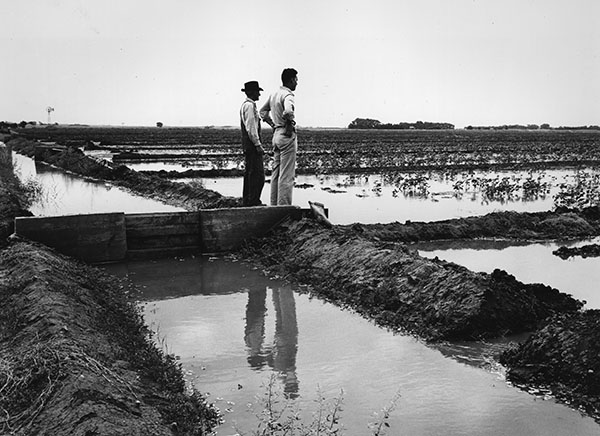
IRRIGATION.
Irrigation accounts for the vast majority of water use in Oklahoma. Between eight hundred million and nine hundred million gallons of water are used each day for irrigation in the state. In 1997 Oklahoma had 2,710 irrigated farms totaling 506,459 acres. Almost 90 percent of the water used for irrigation comes from groundwater, especially from the Ogallala Aquifer in western Oklahoma.
Irrigation became a popular topic in the 1930s because of that decade's drought and dust storms. However, in the 1940s irrigation assumed increasing importance in Oklahoma agriculture. At the start of that decade fewer than five thousand acres in the state were irrigated, but by the 1950s the number had reached nearly fifty thousand and continued to grow. This was largely the result of two events: the increased use of deep-well irrigation in the far western part of the state, especially the Panhandle, and the establishment of a reservoir and canal system at Altus that facilitated gravity-flow irrigation.
Deep-well irrigation, dependent on the centrifugal pump and oil and gas engines to tap the vast groundwater reservoir, became common on the southern plains in the late 1940s and early 1950s. The wheeled, center-pivot sprinklers that operated from this water pressure became the most common form of irrigation in the state. By 1994, 335,014 acres out of almost one-half million acres were irrigated in this manner. Texas and Cimarron counties lead the way, drawing more than one hundred million gallons of water a day from the Ogallala Aquifer.
Gravity-flow systems irrigated 122,105 acres. Most of this activity centered around Altus. The city of Altus, the Federal Bureau of Reclamation, and the Works Progress Administration jointly funded a reservoir and canal system that became known as the W. C. Austin Project. Authorized under the Rivers and Harbors Act of 1938, construction began in 1941 with a projected cost of $600,000. Irrigation from the new system began in 1946.






